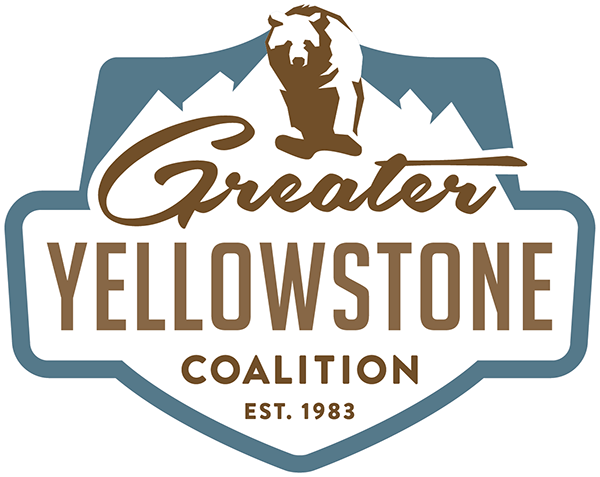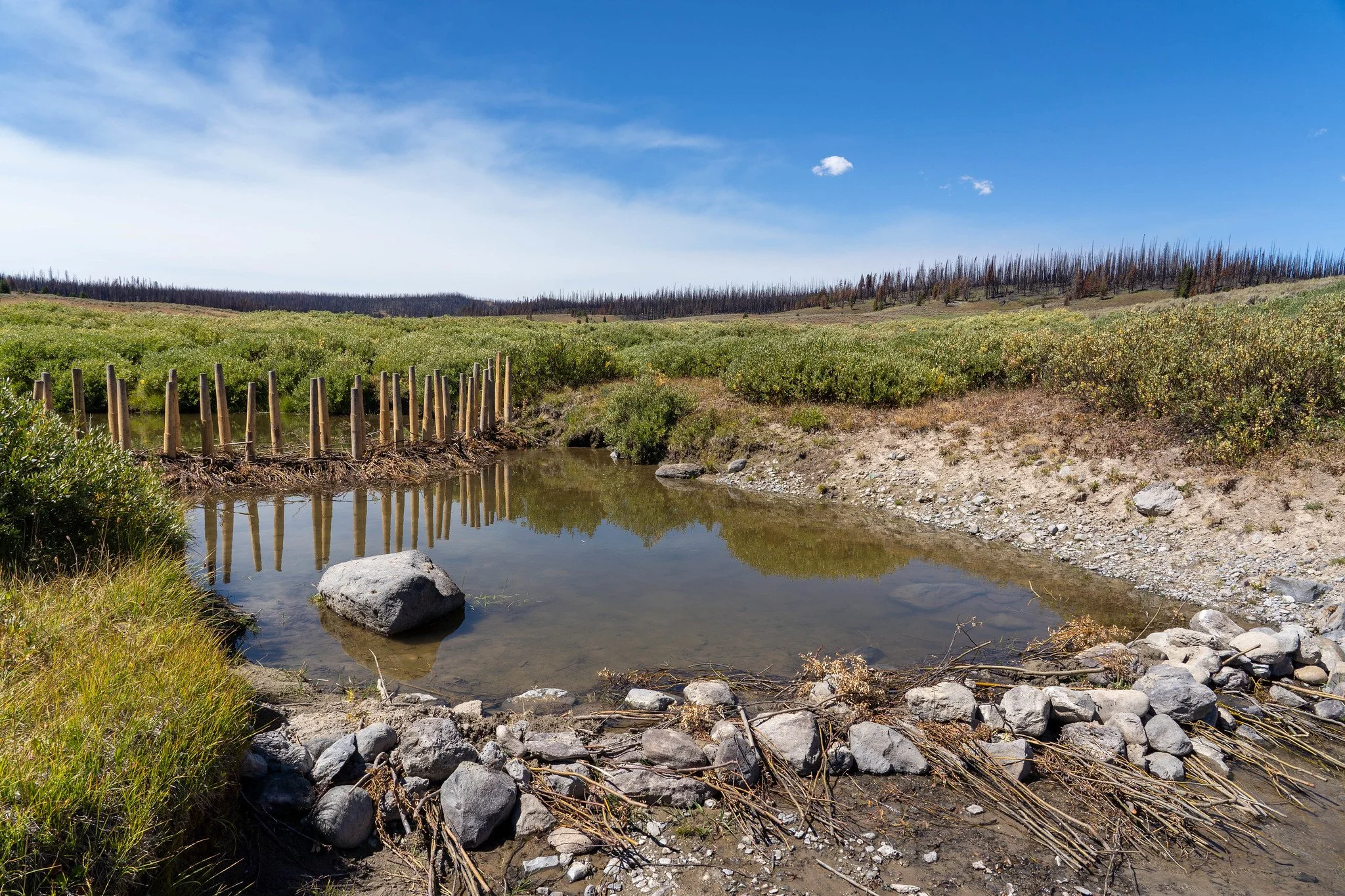Why Beavers may be the Key to Wetland Restoration
In a quiet, slow-moving tributary of the Yellowstone River, a ripple disturbs the surface of a small pond. A moment later, a sleek, brown mammal emerges from the water and disappears into the brush, returning with a freshly cut willow branch to add to its growing dam. This small creature has an outsized impact on the health of the entire ecosystem, just by building itself a home.
The cold, clean streams and wild rivers of the Greater Yellowstone Ecosystem sustain fish, wildlife, and communities across the West. But as drought, wildfire, and development intensify, the future of these waters is at risk. Beavers might just hold one of the keys to protecting them.
A pair of beavers in Yellowstone National Park’s Lamar Valley. Photo NPS/Neal Herbert
Beaver dams slow water, create wetlands that store rain and snowmelt, recharge groundwater, filter out sediment, and provide critical habitat for Greater Yellowstone’s wildlife. In short, beaver activity makes landscapes more resilient to a changing climate—benefits Montana needs now more than ever.
Montana Fish, Wildlife & Parks is currently considering a Beaver Transplant Program (MBTP) that would create a framework for state wildlife managers and partners to relocate beavers from areas of conflict to places within their historical range where their natural behavior can help restore degraded watersheds. Today, lethal removal is often the only option for problem-causing beavers on private or developed lands. The proposed MBTP would change that—providing a humane, science-based way to turn conflict into opportunity.
This approach isn’t theoretical. Beaver translocation programs are already underway in Idaho and Wyoming, where relocated beavers are successfully rebuilding stream systems and improving water storage and quality.
Historically, beavers helped maintain healthy watersheds across Montana. Over-trapping in the 1700s and 1800s, followed by widespread stream alteration, left many of these systems degraded and disconnected. Restoring beavers to suitable areas of their historical range helps bring back that lost balance and the natural process of recovery they once maintained.
Beaver activity is so effective at restoring degraded waterways that building imitation beaver dams has become a successful conservation tool implemented by the Greater Yellowstone Coalition and partners.
Beaver Dam Analogs on Sheridan Creek. Photo GYC/London Bernier
We recently employed this tactic on Sheridan Creek, a fire-affected tributary of the Wind River in Wyoming, to capture and slow post-fire sediment, keeping it on-site instead of letting it wash downstream. By mimicking the ecological benefits of natural beaver activity, we can enhance habitat for native cutthroat trout and improve the connection between the river and its floodplain.
Our staff and partners build great imitation beaver dams—known in the field as Beaver Dam Analogs—but why mimic a natural process when real beavers could be doing the work themselves?
Programs like the Montana Beaver Transplant Program can speed up the recovery of damaged watersheds, build resilience against wildfire and drought, and restore the natural systems that hold our landscapes together.
Cold, clean, and connected water is the lifeblood of Greater Yellowstone. By bringing beavers back to places where they belong, Montana can help ensure that its rivers—and all who depend on them—can thrive now and for generations to come.
– Sierra Harris, Climate and Water Conservation Manager [Bozeman, MT]



